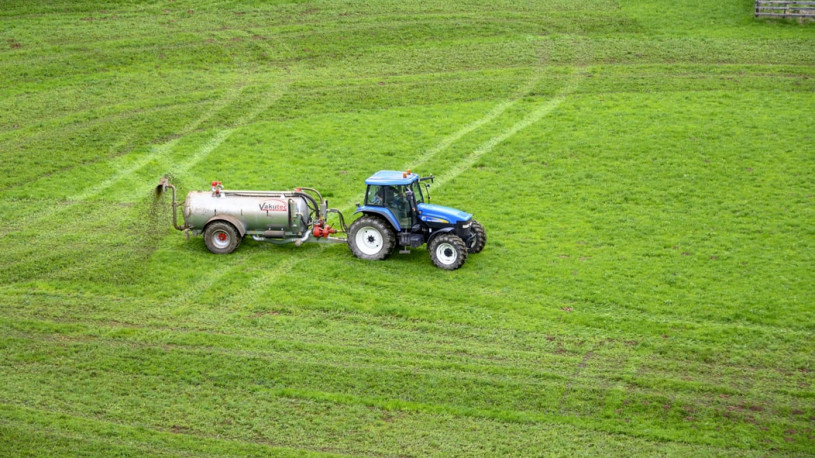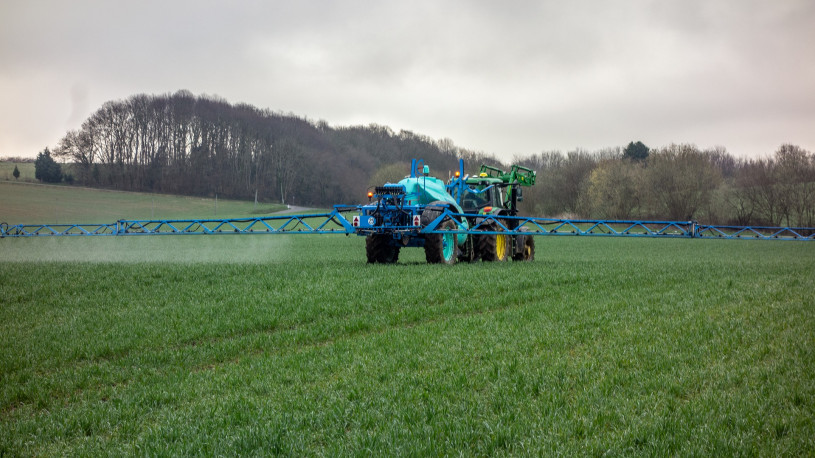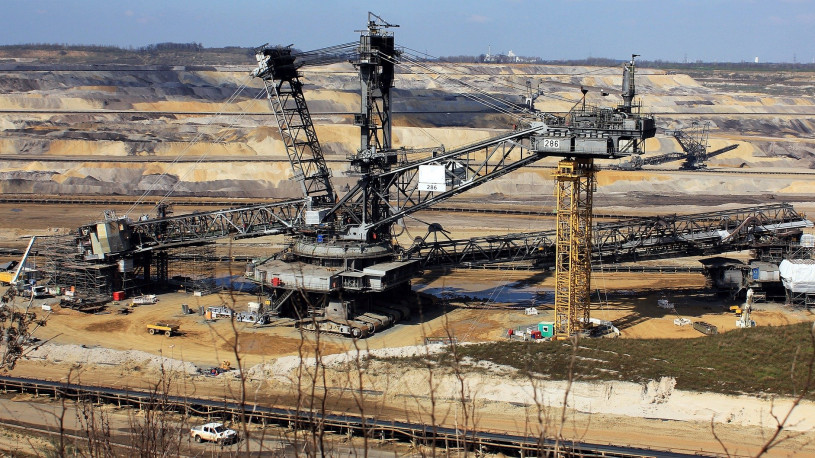-
What can be Done to Increase Phosphorus Efficiency?
 Continue Reading
Continue ReadingIf we are serious about the problem of wasted phosphorus product, then there are a number of areas the fertilizer industry and agribusiness could focus on to prevent a future market meltdown of ‘peak phosphorus’ proportions.
Many of these were set out in a recent article published by the Institute for Sustainable Futures, when it stated the following targets;
• increasing the efficiency of fertiliser application (only 20% to 30% of P in fertiliser is taken up by plants every year)
• recovering and reapplying waste such as urine and faeces (adults excrete 98% of the phosphorus they consume!)
• reducing phosphorus losses from crop spillages, non-edible crop by-products, and wastage during food processing, retail and household food consumption
• reducing the quantity of meat consumed in the average diet (producing meat products require 10 times the phosphorus required to produce vegetable-based products).A 2013 report by Dr Dana Cordell and Dr Stuart White, of Sydney’s University of Technology, which was published through the scientific journal Agronomy, explained how an integrated approach to phosphorus use on farms could achieve the highest efficiency rates. The report combined a number of current practices used to improve efficiency, with, “…examples ranging from increasing efficiency in the agricultural and mining sector, to technologies for recovering phosphorus from urine and food waste.” The report went on to highlight how there is no silver bullet for wasting less phosphorus, but instead a mixture of measures taken together could prove most effective. It stated that, “An integrated approach will enable scientists and policy-makers to take a systematic approach when identifying potential sustainable phosphorus measures.”
Meanwhile the Institute For Sustainable Futures also questioned current practices, asking, “Do we need national phosphorus recovery targets? Subsidies on renewable phosphate fertilisers? Phosphorus use cap and trade schemes? Perhaps it’s high time to form an Intergovernmental Panel on Phosphorus Security.”
While some of these ideas might seem radical, they are only part of the early discussion that will hopefully delay or put an end to potentially catastrophic problems if phosphorus markets begin to react in the way that today’s oil markets do.
Certainly there is pressure on governments to act to ensure that their populations have food security. One such institute applying pressure is Phosphorus Futures, an NGO that is part of the United Nations Environment Programme’s Global Partnership on Nutrient Management. In a recent report it noted that, “Food demand is on the rise globally with no slowing down in sight. More demand for meat and dairy, especially in China and other rapidly growing economies, means more demand for fertilizers. While our bodies only need around 0.4 kg of P each year, we are mining 22.5 kg of phosphate rock for each person’s diet.”
Many industries are aiming to be a part of the circular economy, but clearly phosphorus fertilizer manufacturers are some way off. With such a low rate of return from the fertilizer supplier to the consumers’ plate, perhaps everyone in the industry should be thinking less about supplying more fertilizer, and more about wasting less phosphorus.
Photo credit: White and Cordell
Photo credit: PorterIndiana
-
Long-Term Phosphorus Prices set to Soar. Is it Time to Act Now?
 Continue Reading
Continue ReadingPhosphorus equals life. Nothing that lives can survive without it. It is the go-to chemical feedstock for fertilizer and animal feed, and a key chemical product in a multi-billion dollar market.
This information surprises most people, as the importance of phosphorus is little known outside of the agricultural and agriproduct industries. But what should be surprising absolutely everyone is how little we are talking about the future of phosphorus supplies.
Shouldn’t We Be Doing More to Improve Phosphorus Use Efficiency?
About a decade ago, there were numerous scare stories and theories circulating that the world was due to run out of phosphorus. Wise minds soon debunked these theories, and pointed to great untapped stockpiles of phosphorus available, such as off the coast of the US Californian and Eastern seaboards, as reported to the US Dept of the Interior. As discussed in previous articles on this blog page (here, as well as here), these stockpiles contain sufficient phosphorus for the next 200 years (give or take a hundred years).
Panic over.
Or is it? Because according to Dr Dana Cordell, of Sydney’s University of Technology, the market for phosphorus could get extremely difficult in as little as 25 years. At this point, she has calculated, “global demand for phosphorus would exceed phosphorus supply”. This situation would be the result of a growing global population, and because by the year 2032 all the easily accessible rock phosphate will have been mined.
We may be technologically able to extract phosphate from more difficult locations (such as Chatham Rise, a submarine ridge off the east coast of New Zealand) but the cost increases will be significant. It is therefore fair to predict that in 25 years time, increased phosphorus demand coupled with increased complications for extraction will be reflected in market prices.
In fact, the situation for future phosphorus supply, demand, and price, is similar to the current supply, demand, and price of oil.
According to Gilbert Masters, Stanford Professor of Civil & Environmental Engineering, Emeritus, “current oil supplies in all nations combined would last the world for only about 41 years.” And he wrote that in 2008!
If the oil is to keep flowing, new drilling technology and oil extraction improvements will be needed; something that is quite likely if this report by the BBC is to be believed.
But think how unstable oil prices are at present; over $140 a barrel in 2008, $40 a barrel in 2009, $120 in 2011, $40 in 2017.
And this price uncertainty comes despite the fact that oil is extracted from dozens of countries all over the planet, and numerous energy alternatives are available. Phosphorus meanwhile, is extracted from only a handful of countries (95% of current supply is from the disputed Morocco/Western Sahara deserts), and it has NO known replacement products.
The world has a limited supply of a vital resource, so shouldn’t everyone be talking about phosphorus use and agricultural product efficiency?
Shouldn’t We Be Doing More to Improve Phosphorus Use Efficiency?
In recent report in the sustainability website, TheConversation, Dr Cordell also outlined how inefficient phosphorus use can be. The article explains how, “Australia uses 480 kilotonnes (kt) of phosphorus each year. The majority of it, 450kt, is used in agriculture with an average efficiency rate of 25%.
This means four units of fertiliser are applied to soil to produce one unit of phosphorus in products. Those products are exported or consumed domestically. The remaining 75% (the other three units) accumulates in agricultural soils, with a small proportion also lost to waterways.”Meanwhile, the online scientific journal Elsevier, also highlighted the problems with phosphorus wasteage, stating that, “The phosphorus balance efficiency of the major southern Australian broadacre farm enterprises varies considerably from extremely poor (5-15% for some horticultural enterprises), through poor (20-40% for grazing industries), to moderate (45-60% in cropping enterprises).”
Clearly, these efficiency rates need to be improved. They are lost money for the consumer, result in damage to the environment through run-off and eutrophication, and mean that a valuable, limited resource is being wasted.
The agribusiness industry could wait until the price of phosphorus reaches heights that will force fertilizer manufacturers to focus on improved rates of absorption, but can the planet afford to wait? Phosphorus supply chain experts are predicting long-term price increases, something that phosphorus producers should be pleased about. But fertilizer manufacturers will be less happy about price increases to their chemical feedstocks. So shouldn’t they be doing more to improve phosphorus efficiency?
Photo credit: White and Cordell
Photo credit: Greenecoegypt
-
Programmers Develop Computer Tool to Detect Chemical Compounds for use in Rare-Earth Processing
 Continue Reading
Continue ReadingThe modern world is dependent on electronic devices and appliances; without them, populations would riot.
Modern appliances, meanwhile, are dependent on rare earth elements in their electronic components to significantly improve their electromagnetic properties. Everything from vacuum cleaners to refrigerators, from mobile phones to laptops, needs these rare earth minerals.
Currently 95% of world production of rare earth elements is in China, which gained its near monopoly towards the end of the 20th century. In the year 2000, the situation came to a head when a trade dispute at the WTO flared up. China began setting quotas and export licenses, and the cost of production and exports skyrocketed.
As a result, the U.S. chose to renew its mining and production operations, intent on maintaining a source of a highly strategic material. Without rare-earth elements a nation cannot make satellites, military command and control systems, a space program or even a modern army.
The U.S. Department of Energy’s Critical Materials Institute (CMI) was assigned a primary goal of finding environmentally friendly and cheaper ways of sourcing rare-earth minerals. This research is now bearing fruit, and may lead to cheaper rare-earth minerals, and even cheaper electronics.
For recently the CMI reported that it has developed a computer program that will dramatically reduce the time and money it takes to identify promising chemical compounds that are used in rare-earth processing methods. As software designer and CMI scientist Federico Zahariev explains, “Traditional, quantum mechanical methods of predicting the molecular design and behavior of these extractants are too computationally expensive, and take too long for the timescale needed. So we developed a program that could create a simpler classical mechanical model which would still reflect the accuracy of the quantum mechanical model.”
The research team have named this computer program ParFit, “a Python-Based Object-Oriented Program for Fitting Molecular Mechanics Parameters to ab Initio Data.”
Reporting on the development, the online scientific journal Phys.org, notes that, “ParFit uses traditional and advanced methods to train the classical mechanical model to fit quantum mechanical information from a training set. These classical models can then be used to predict the shape of new extractants and how they bind to metals.”
“Roughly speaking, think of the molecule’s shape and structure as a system of springs, where there might need to be a lot of small tightening or loosening of different connections to make it work correctly,” said CMI Scientist Theresa Windus. “It’s the same way in which we apply the quantum mechanical calculations to create these classical mechanical models—it’s a tedious, error-prone, and lengthy process. ParFit makes this as quick as possible, automates the fitting of those parameters, and accurately reproduces the quantum mechanical energies.”
The researchers have published their results in the Journal of Chemical Information and Modelling, where they describe the program as follows; “ParFit uses a hybrid of deterministic and stochastic genetic algorithms. ParFit can simultaneously handle several molecular-mechanics parameters in multiple molecules and can also apply symmetric and antisymmetric constraints on the optimized parameters. The simultaneous handling of several molecules enhances the transferability of the fitted parameters.”
While this outlines the more scientific side of the development, the team can also appreciate the practical application of the program, as they state in the publication that, “As an example, a series of phosphine oxides, important for metal extraction chemistry, are parametrized using ParFit.”
Interestingly, they also note that, “ParFit is in an open source program available for free on GitHub (https://github.com/fzahari/ParFit).”
“The program’s capabilities enable the researchers to model an almost unlimited number of new extractants,” says software developer and CMI Scientist Marilu Dick-Perez. For example, the classical models used in the software code, HostDesigner – developed by Benjamin Hay of Supramolecular Design Institute, creates and quickly assesses possible extractants for viability and targets extractants that are best suited for further research. “We’ve reduced the computational work from 2-3 years down to three months,” she said. “We’ve incorporated as much expert knowledge into this program as possible, so that even a novice user can navigate the program.”
Given the free access to the program and its alleged ease of use, the impact that this program may have on rare-earth mineral sourcing could be huge. While it is unlikely to break China’s near-monopoly on production, it could still reduce costs, and with Beijing further embracing market economics, this development may lead to cheaper chemical exports of the vital rare-earth elements that we all use.
Photo credit: Saskatchewan Research Council
